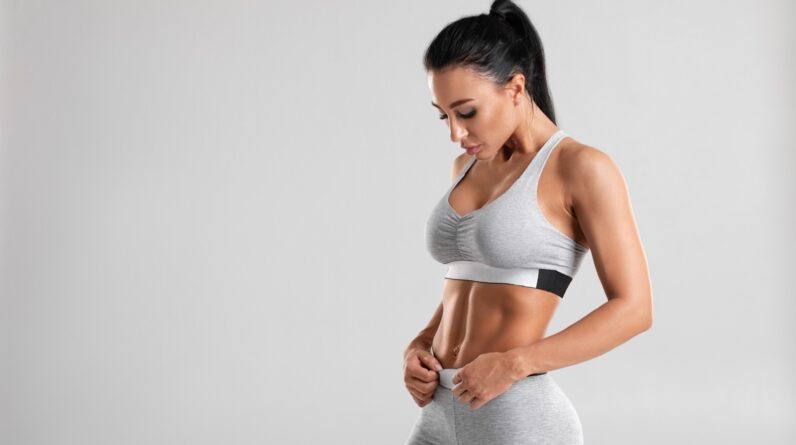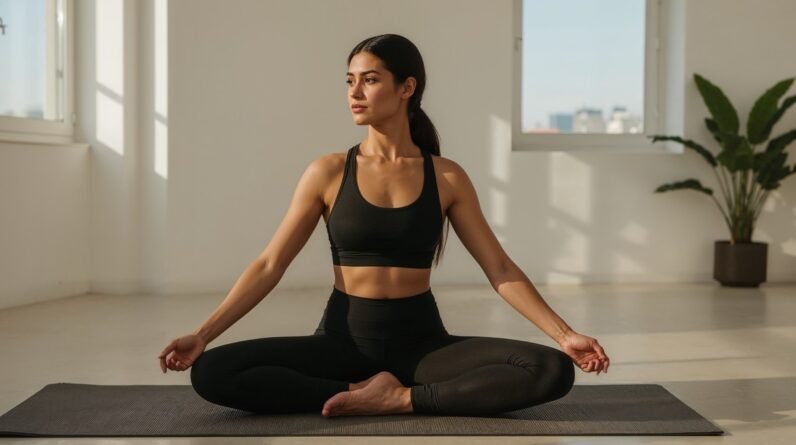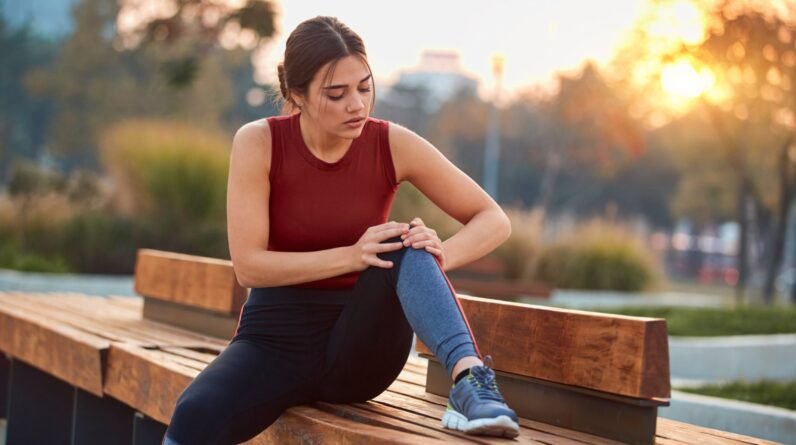
Give a chance to these 5 most underrated Pilates core exercises. They can target deep core muscles, build strong abdominal muscles and correct body posture.
Your core is not just your abs. It is the whole central part of your body, including your hips, pelvis, and lower back. Strengthening these areas is important because they help you perform everyday activities more easily. A strong core can make it easier to pick something up from the floor, reach for things on high shelves in your kitchen, or even maintain better posture. When it comes to strengthening the core, you probably think of crunches, planks, or bodyweight exercises. But those are not the only ways to build a strong core. Some Pilates core exercises can also work wonders for toning your body and strengthening your core, including your abs.
In a recent Instagram post, celebrity fitness trainer Yasmin Karachiwala shared some underrated Pilates core exercises that target your core in ways you might not expect. She explains, “These moves go beyond the basics to strengthen deep abdominal muscles, enhance stability, and improve posture.” She encourages adding them to your routine for a more balanced and effective core workout. Yasmin also explains why these Pilates core exercises are often overlooked, even though they are incredibly effective.
Pilates core exercises: What are the benefits?
Pilates exercises are highly effective for strengthening the core, improving posture, and enhancing stability. These exercises target deep abdominal muscles, the lower back, hips, and pelvis, promoting better balance and flexibility. Pilates core exercises can also reduce the risk of injury by improving muscle coordination and pelvic alignment. A study published in the Journal of Multidisciplinary Healthcare found that regular Pilates practice significantly improved core strength and stability in participants, leading to better functional movement and reduced lower back pain.
Pilates core exercises
You may also like


Here are 5 Pilates core exercises that can help strengthen your ab muscles and can be performed in the comfort of your home:
1. Toe taps (supine)
“This is one of the great Pilates core exercises that strengthens the transverse abdominis, which is the deep muscle layer of the core,” says Karachiwala. This muscle plays a significant role in stabilising the pelvis and spine, reducing the risk of injuries, particularly in the lower back. It can also improve your overall body posture.
How to perform:
- Start by lying on your back with your knees bent at 90 degrees and feet flat on the floor. Engage your core and place your hands on the floor.
- Lift your legs to a tabletop position (knees over hips).
- Slowly lower your right foot toward the floor, tapping the toe gently before returning to the tabletop position. Keep your pelvis stable and avoid letting your lower back arch.
- Repeat with your left leg. Continue alternating taps, keeping your core engaged and movements controlled.
Why it is underrated: This foundational exercise is often skipped in favour of more advanced movements, but it is excellent for building core stability.
Pilates ball workout: 7 exercises to build core strength
2. Single-leg stretch
The single-leg stretch is a dynamic movement that builds core strength while improving pelvic stability. It also enhances coordination, as it requires you to move one leg at a time while keeping your core engaged. This Pilates core exercise improves flexibility in the hips and legs while strengthening the abdominals.
How to perform:
- Begin lying on your back with your knees bent and drawn toward your chest.
- Lift your head, neck, and shoulders off the mat, engaging your core.
- As you extend your right leg straight out at a 45-degree angle, hold your right leg with your hands.
- Keep your core engaged and your head lifted, straightening your left leg.
- Repeat the movement, focusing on controlling the motion with your core muscles and keeping your lower back pressed into the mat to avoid strain.
Why it is underrated: Often overshadowed by more advanced core exercises, it is a foundational move with excellent benefits.

3. Double leg stretch
The double leg stretch is an excellent full-body exercise that strengthens the entire core, including the upper and lower abdominals. This movement also challenges coordination and balance and improves breathing control. By extending both legs and arms at once, this exercise activates the deep core muscles and increases flexibility in the lower back and legs.
How to perform:
- Start in a similar position as the single-leg stretch, lie on your back with your knees bent and pulled toward your chest, head, neck, and shoulders lifted off the mat.
- Hold your ankles with your hands, then extend both arms overhead and both legs straight out toward the mat. Keep the arms and legs a few inches off the floor to ensure full engagement of your core.
- Circle your arms outward and around while bringing your knees back toward your chest, and repeat the movement, engaging your core to maintain control.
- Be mindful of keeping your lower back pressed into the mat, preventing any arching or strain.
Why it is underrated: Often overlooked for its simplicity, this Pilates core exercise is one of the most effective full-core engagement exercises.
Check out the Instagram post of Yasmin Karachiwala:
4. Corkscrew
This Pilates core exercise targets the obliques and the deep core muscles, which are responsible for rotational movement and stabilising the spine. This exercise also enhances spinal mobility and pelvic stability, making it a fantastic choice for improving posture and preventing lower back pain, as per Karachiwala.
How to perform:
- Start by lying on your back with your arms at your sides for stability. Lift your legs off the mat to a 90-degree angle.
- Inhale as you lower your legs to one side while keeping them straight, then exhale as you circle your legs up and around toward the opposite side, engaging your obliques as you rotate your pelvis and spine.
- The goal is to move your legs in a smooth, controlled circular motion, ensuring that your shoulders remain stable on the mat and your core remains engaged.
- Repeat the movement, alternating directions after a set of rotations.
Why it is underrated: It is less popular than its advanced variations (e.g., the Jackknife) but offers significant benefits when done with control.
5. Rolling like a ball
This rolling like a ball is a Pilates core exercise that engages the deep abdominals and promotes spinal mobility. “This playful movement strengthens the core while enhancing coordination and balance,” explains Karachiwala. The exercise also helps to massage the spine, improving circulation and flexibility in the back.

How to perform:
- Begin sitting on the mat with your knees drawn toward your chest and your hands gripping your shins.
- Round your back and lift your feet off the floor, balancing on your sit bones.
- Roll back toward your shoulder blades, maintaining a rounded shape with your spine.
- As you roll, do not let your head drop backward or your neck strain.
- When you reach the bottom of the roll, immediately reverse the motion and return to the sitting position, using your core to control the movement.
- Repeat the rolling action several times, focusing on balance and smoothness rather than speed. The goal is to roll fluidly and maintain control of the core throughout.
Why it is underrated: Sometimes dismissed as too playful, it is a true test of core strength and balance.
So ladies, try these Pilates core exercises at home and see the quick changes!







